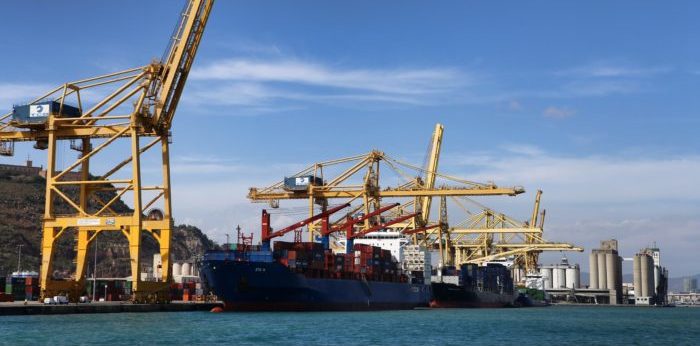In 2017, the Port of Barcelona recorded its best results yet in cargo handling as it seeks to become the fastest-growing European port. Total traffic (including all cargo modes) surpassed 61 million tonnes for the first time, recording a year-on-year increase of 26%.
Key points
- Nearly 3 million TEU (specifically 2,968,757 TEU) were moved in 2017, representing an increase of 32.3%.
A very significant factor in this increase was transshipment containers (+137%), which are those unloaded from one ship to be reloaded onto another for final shipment. Although this activity does not impact directly on the economy of the Port’s surrounding economy, it does help to make stowage operations more competitive and to provide greater connectivity for the region’s importers and exporters.
- Containers for foreign trade also performed very well. Containerised import cargo stood at 561,103 TEU (+8.3%) and export cargo (the most significant in volume terms, at 705,204 TEU) was up 2.6%. In 2017 the Port of Barcelona channelled 68% more of this type of cargo than in 2007.
- It is also significant that last year the all-time record for import containers, which was established in 2007, was surpassed for the first time. Specifically, the Catalan port channels 3% more import containerised cargo than it did ten years ago.
- China continues to be the Port of Barcelona’s prime trading partner, both in terms of imports (44.3% of foreign trade containers unloaded in the Catalan facility come from the Asian giant), and exports (since it receives 11.6% of the containers leaving the Port). The remaining trading partners of the Port, and the type of products channelled, are highly diversified.
- In 2017 liquid bulk transport also hit a record high at the Port, with a total of 14.4 million tonnes of goods transported (mainly hydrocarbons) marking an increase of 27% year on year. We would point to the growth in specific products such as natural gas (+64%), gasoline (+30%) and chemicals (+23%).
- In the case of dry bulk, with 4.4 million tonnes of goods handled, and an increase of around 1%, soya beans (+10%) and cereals and meal (+13%) experienced the most positive development).
- The Port channelled 393,601 intermodal transport units (UTI) of Ro-Ro traffic (embarked by truck, platform or trailer), marking an increase of 6.2%.
- Barcelona channelled a total of 144.723 UTI (+7%) via the motorways of the sea (or short sea shipping services), resulting in an identical number of trucks diverted from the road to the maritime mode, which is more efficient both economically and environmentally. Traffic on the motorways of the sea also hit a new record for the Port and contributes significantly to boosting sustainable logistics chains in the Mediterranean area.
- During 2017 the Port of Barcelona channelled a total of 837,273 vehicles, down 8.7% year on year. Spanish vehicle production and exports also declined last year, which can be seen in the Port’s vehicle traffic results. Even so, Barcelona remains the leading port within the Spanish port system in terms of movement of vehicles.
- As regards passenger figures, for the first time in its history the Port of Barcelona moved more than 4 million people, comprising ferry passengers (1.4 million) and cruise-goers (2.7 million). The total number of passengers increased by 4.5%, caused mainly by the increase in ferry passengers (+12%). Cruise passenger numbers increased by 1%. It is important to stress that in the months considered as the “low” season (January, February, March, November and December) cruise passenger numbers were up 13%, while in the remaining months there was a decrease of 2%.






























































